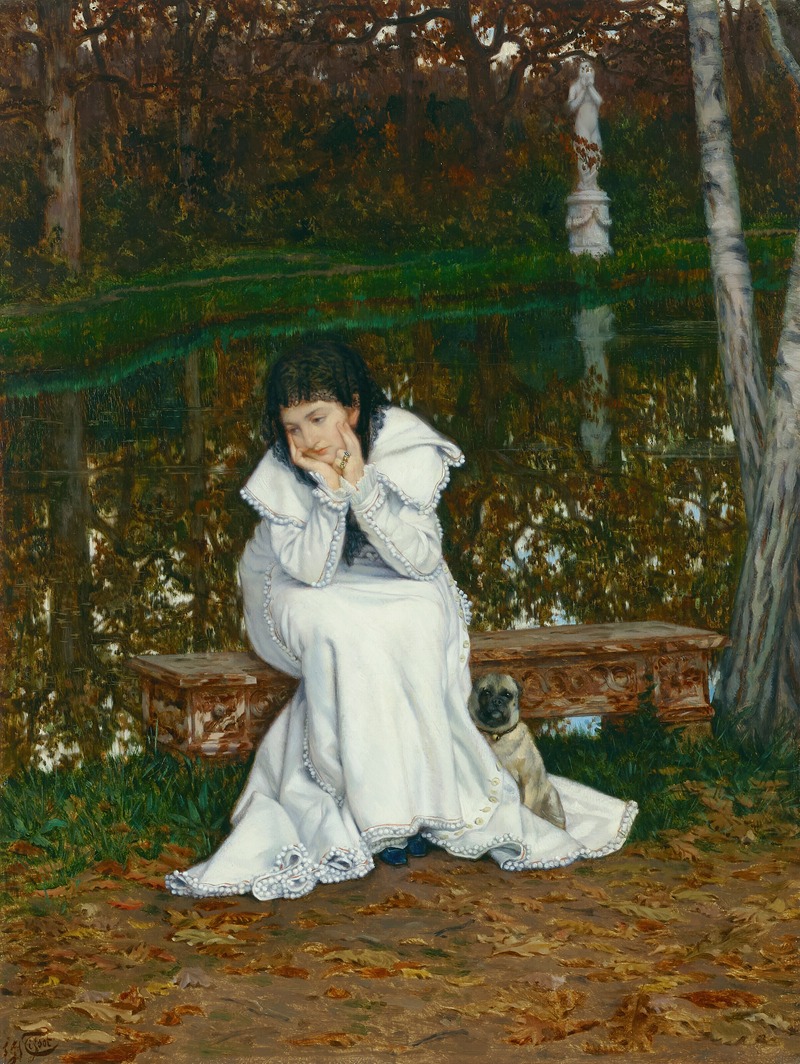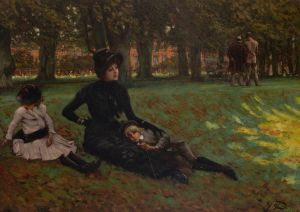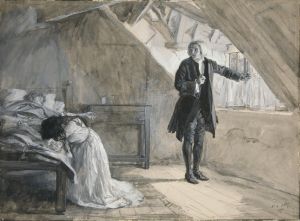
Mélancolie
A hand-painted replica of James Tissot’s masterpiece Mélancolie, meticulously crafted by professional artists to capture the true essence of the original. Each piece is created with museum-quality canvas and rare mineral pigments, carefully painted by experienced artists with delicate brushstrokes and rich, layered colors to perfectly recreate the texture of the original artwork. Unlike machine-printed reproductions, this hand-painted version brings the painting to life, infused with the artist’s emotions and skill in every stroke. Whether for personal collection or home decoration, it instantly elevates the artistic atmosphere of any space.
James Tissot's painting "Mélancolie" is a notable work by the French painter, who is renowned for his detailed and often enigmatic depictions of contemporary life in the late 19th century. Born Jacques Joseph Tissot in 1836 in Nantes, France, Tissot became a prominent figure in both French and British art circles. His works are characterized by their meticulous attention to detail, vibrant use of color, and the ability to capture the subtleties of human emotion and social nuances.
"Mélancolie" is a painting that reflects Tissot's interest in the themes of introspection and emotional depth. While specific details about the painting's creation, such as the exact year it was painted, are not widely documented, it is consistent with Tissot's style during the period when he was exploring themes of personal reflection and the complexities of human emotion. The title itself, "Mélancolie," suggests a focus on melancholy, a state of pensive sadness or contemplation, which was a common theme in art and literature during the 19th century.
Tissot's work often features women as central figures, and "Mélancolie" is no exception. The painting typically portrays a woman in a moment of quiet reflection, embodying the theme of melancholy through her posture, expression, and the surrounding environment. Tissot's ability to convey emotion through subtle details is evident in the way he captures the nuances of the woman's demeanor, inviting viewers to ponder her thoughts and feelings.
The setting of "Mélancolie" is likely to be a domestic interior, a common backdrop in Tissot's paintings, which allows for an intimate glimpse into the private world of his subjects. The use of light and shadow in the painting enhances the mood, creating a sense of depth and atmosphere that draws the viewer into the scene. Tissot's skillful use of color and texture further adds to the painting's emotional impact, highlighting the contrast between the subject's inner world and the external environment.
James Tissot's career was marked by his ability to capture the essence of his time, and "Mélancolie" is a testament to his talent for portraying the complexities of human emotion. After achieving success in France, Tissot moved to London in 1871, where he continued to develop his distinctive style and gained popularity among British audiences. His works from this period often reflect a blend of French and British influences, combining the elegance of French art with the narrative quality favored by British painters.
Tissot's paintings, including "Mélancolie," remain significant for their ability to transcend the specificities of their time and resonate with contemporary audiences. They offer a window into the social and cultural dynamics of the 19th century while exploring universal themes of emotion and introspection. Today, Tissot's works are held in high regard and can be found in major art collections and museums around the world, where they continue to be studied and appreciated for their artistic and historical significance.

















